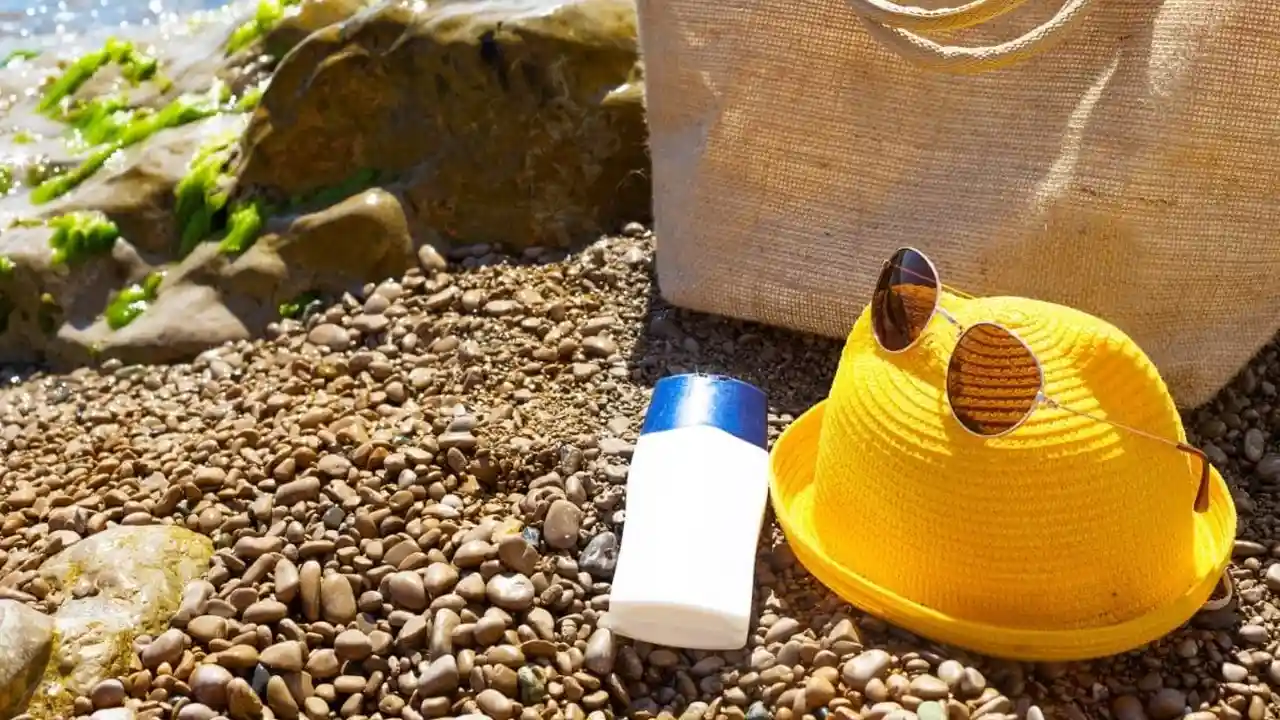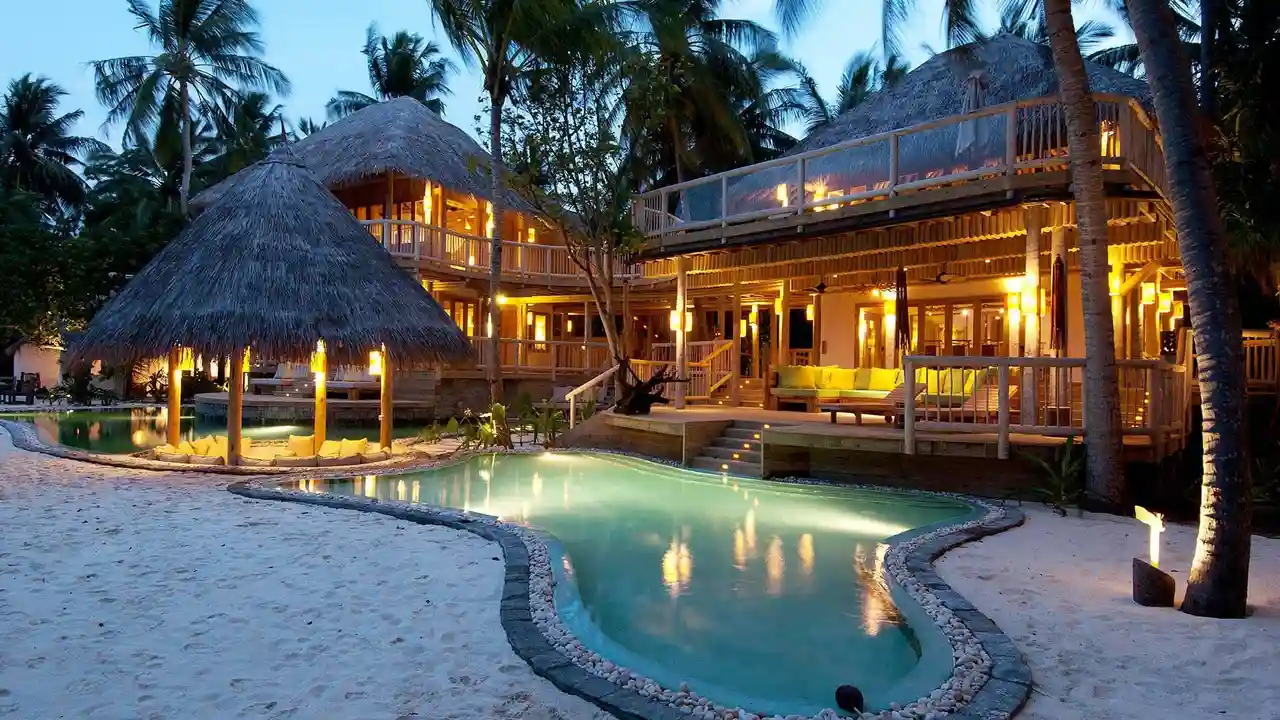Eco-Friendly Sunscreens Reviewed Guide
A reviewed guide to eco-friendly sunscreens for sustainable travel. Protect your skin while minimizing your impact on marine ecosystems. Choose reef-safe sunscreens for your next adventure.

Why Reef Safe Sunscreen Matters Sustainable Travel
Okay, let's dive into why reef-safe sunscreen is a *must* for any eco-conscious traveler. You see, traditional sunscreens often contain chemicals like oxybenzone and octinoxate. These sound scary, right? Well, they *are* pretty nasty for our coral reefs. They can disrupt coral’s growth, damage their DNA, and even lead to coral bleaching. And bleached corals? They're basically starving and much more susceptible to disease. Not cool.
When you're swimming in the ocean, these chemicals leach off your skin and directly impact the marine environment. It's like dumping pollution right into their home. So, switching to reef-safe sunscreen isn't just a nice thing to do – it's essential for protecting these vital ecosystems, especially if you're planning on snorkeling, diving, or just splashing around in the ocean. Plus, many places, like Hawaii and certain Caribbean islands, have actually banned sunscreens containing these harmful chemicals. So, you might not even have a choice!
Understanding Reef Safe Labels Mineral vs Chemical Sunscreens
Navigating the world of reef-safe sunscreen can be a bit confusing. You'll often see terms like \"mineral sunscreen\" and \"chemical sunscreen\" thrown around. Here's the lowdown:
Mineral Sunscreens: These use mineral ingredients like zinc oxide and titanium dioxide as active ingredients. These minerals create a physical barrier on your skin that reflects UV rays. They're generally considered safer for the environment because they don't contain those harmful chemicals we talked about earlier. Look for \"non-nano\" versions, which means the particles are large enough not to be absorbed by marine organisms.
Chemical Sunscreens: These use chemical filters to absorb UV rays. It's these chemical filters (oxybenzone, octinoxate, etc.) that are the problem. While they might feel lighter on your skin, they're definitely not reef-friendly. Always double-check the ingredient list!
The easiest way to make sure you're buying something reef-safe is to look for sunscreens that are specifically labeled as \"reef-safe\" or \"reef-friendly.\" But remember, *always* check the ingredient list to be sure! Greenwashing is real, and some companies might use these labels even if their product isn't truly safe.
Top Eco Friendly Sunscreen Brands Products Reviews
Alright, let's get to the good stuff! Here are some of my top picks for eco-friendly sunscreens that actually work:
1. Raw Elements Tinted Facial Moisturizer SPF 30
Why I love it: This stuff is amazing. It's a mineral sunscreen with a slight tint, so it actually evens out your skin tone *and* protects you from the sun. It's made with certified organic ingredients, water-resistant, and comes in a metal tin, which is a huge plus for reducing plastic waste.
Use Case: Perfect for everyday wear, especially if you want a little bit of coverage. Great for hiking, swimming, or just hanging out at the beach.
Price: Around $20-$25.
2. Badger Balm SPF 30 Unscented
Why I love it: Badger Balm is a classic for a reason. It's super gentle, made with minimal ingredients, and very effective. It's also a great option for kids and people with sensitive skin. The unscented version is perfect if you don't like strong fragrances.
Use Case: Ideal for all-over body protection, especially for long days outdoors. Great for swimming, hiking, and other activities where you'll be exposed to the sun for extended periods.
Price: Around $15-$20.
3. Stream2Sea SPF 30 Mineral Sunscreen
Why I love it: Stream2Sea is specifically designed to be safe for marine life. They've gone through rigorous testing to ensure their products don't harm coral reefs or other aquatic organisms. It's also biodegradable, which is a huge bonus.
Use Case: Perfect for diving, snorkeling, and other water activities where you want to be extra sure you're not harming the environment. Also great for use in areas with sensitive ecosystems.
Price: Around $20-$25.
4. ThinkSport Safe Sunscreen SPF 50+
Why I love it: ThinkSport is a great option for those who need high SPF protection. It's water-resistant, reef-safe, and doesn't contain any harmful chemicals. It's also fragrance-free, making it a good choice for people with sensitive skin.
Use Case: Ideal for activities where you'll be exposed to intense sun, such as hiking at high altitudes or spending a long day on the water. Also great for kids.
Price: Around $15-$20.
5. Babo Botanicals Clear Zinc Sunscreen Lotion SPF 30
Why I love it: Babo Botanicals is a fantastic choice for families with young children. This sunscreen uses clear zinc, which means it rubs in more easily than some other mineral sunscreens, leaving less of a white cast. It's also hypoallergenic and fragrance-free.
Use Case: Perfect for everyday use on kids, especially for swimming and playing outdoors. The clear zinc formula makes it easier to apply and less likely to leave a visible residue.
Price: Around $15-$20.
Eco Friendly Sunscreen Product Comparison Factors Price Ingredients
Choosing the right sunscreen can feel overwhelming, so let's break down some key factors to consider:
Price: Eco-friendly sunscreens can be a bit pricier than conventional ones. Think about how often you'll be using it and whether you're willing to invest a little more for the environmental benefits. Consider buying in bulk if you use sunscreen regularly.
Ingredients: This is the most important factor! Make sure the sunscreen is free of oxybenzone, octinoxate, and other harmful chemicals. Look for mineral-based formulas with zinc oxide and titanium dioxide. Also, check for other potentially irritating ingredients if you have sensitive skin.
Water Resistance: If you're planning on swimming or sweating, choose a water-resistant sunscreen. Keep in mind that \"water-resistant\" doesn't mean waterproof. You'll still need to reapply every 80 minutes or so.
Application: Some mineral sunscreens can be thick and difficult to rub in, leaving a white cast. Look for formulas that are specifically designed to be easier to apply. Tinted formulas can also help minimize the white cast.
Packaging: Consider the packaging. Look for sunscreens that come in recyclable or biodegradable packaging to further reduce your environmental impact. Metal tins are a great option!
Here's a quick comparison table:
| Sunscreen | Price (approx.) | Key Ingredients | Water Resistance | Best For |
|---|---|---|---|---|
| Raw Elements Tinted Facial Moisturizer SPF 30 | $25 | Zinc Oxide, Organic Ingredients | 80 minutes | Everyday wear, light coverage |
| Badger Balm SPF 30 Unscented | $18 | Zinc Oxide, Sunflower Oil | 40 minutes | Sensitive skin, all-over protection |
| Stream2Sea SPF 30 Mineral Sunscreen | $22 | Zinc Oxide, Green Tea Extract | 80 minutes | Diving, snorkeling, sensitive ecosystems |
| ThinkSport Safe Sunscreen SPF 50+ | $17 | Zinc Oxide | 80 minutes | High SPF protection, kids |
| Babo Botanicals Clear Zinc Sunscreen Lotion SPF 30 | $19 | Zinc Oxide | 80 minutes | Kids, easy application |
Where to Buy Eco Friendly Sunscreen Online Retailers
You can find eco-friendly sunscreens at a variety of retailers:
- Online Marketplaces: Amazon, Thrive Market, and Package Free Shop are great places to find a wide selection of brands.
- Specialty Stores: Check out your local health food stores or outdoor retailers like REI.
- Direct from Brands: Many eco-friendly sunscreen brands sell directly through their websites. This is often the best way to ensure you're getting the most up-to-date information and supporting the brand directly.
Before you buy, read reviews from other users to get a better sense of the product's effectiveness and application. Also, check the expiration date to make sure the sunscreen is still effective.
Applying Eco Friendly Sunscreen Tips Tricks
Even the best sunscreen won't work if you don't apply it correctly. Here are some tips and tricks:
- Apply Generously: Use at least one ounce (about a shot glass full) of sunscreen for your entire body.
- Apply Early: Apply sunscreen at least 15-20 minutes before sun exposure to allow it to absorb into your skin.
- Reapply Often: Reapply sunscreen every two hours, or more often if you're swimming or sweating.
- Don't Forget the Details: Be sure to apply sunscreen to often-missed areas like your ears, the back of your neck, and the tops of your feet.
- Use Lip Balm with SPF: Protect your lips with a lip balm that contains SPF.
Storing Eco Friendly Sunscreen Best Practices
Proper storage can help extend the shelf life of your sunscreen. Here are some best practices:
- Store in a Cool, Dry Place: Avoid storing sunscreen in direct sunlight or hot temperatures, as this can degrade the active ingredients.
- Keep the Lid Tightly Closed: This will prevent the sunscreen from drying out or becoming contaminated.
- Check the Expiration Date: Sunscreen typically has a shelf life of about three years. Discard any sunscreen that is past its expiration date.
DIY Eco Friendly Sunscreen Alternatives
While I generally recommend buying commercially available reef-safe sunscreens to ensure proper SPF protection, there are some DIY alternatives you can consider, but proceed with caution and do your research! These are more for supplementing protection than replacing it entirely.
- Coconut Oil: Coconut oil has a natural SPF of around 4-5. While it's not enough to protect you from prolonged sun exposure, it can provide some minimal protection.
- Shea Butter: Shea butter also has a natural SPF of around 4-6. Like coconut oil, it's not a substitute for sunscreen, but it can provide some additional protection.
- Zinc Oxide Powder: You can mix zinc oxide powder with a carrier oil like coconut oil or shea butter to create your own sunscreen. However, it's difficult to determine the exact SPF of homemade sunscreen, so it's best to use it as a supplement to commercially available sunscreen.
Important Note: Homemade sunscreens are not regulated and may not provide adequate protection. Always test a small area of skin before applying to your entire body, and be sure to reapply frequently.
The Future of Sustainable Sunscreen Innovation Trends
The world of sustainable sunscreen is constantly evolving. Here are some innovation trends to watch out for:
- New Mineral Formulations: Researchers are working on new mineral formulations that are easier to apply and leave less of a white cast.
- Biodegradable Packaging: More brands are adopting biodegradable packaging to reduce plastic waste.
- Plant-Based Ingredients: Some companies are exploring the use of plant-based ingredients to enhance the effectiveness of sunscreen.
- Sunscreen Pills: While still in the early stages of development, sunscreen pills could offer a convenient way to protect your skin from the sun. However, it's important to note that these pills are not a substitute for topical sunscreen.
Supporting Sustainable Tourism Choosing Eco Friendly Sunscreen
Choosing eco-friendly sunscreen is just one small part of supporting sustainable tourism. When you travel, be mindful of your impact on the environment and local communities. Choose eco-friendly accommodations, support local businesses, and respect local cultures. By making conscious choices, you can help ensure that tourism benefits both travelers and the destinations they visit.
So, pack your bags, grab your reef-safe sunscreen, and get ready for an amazing and sustainable adventure! Remember, every little bit helps when it comes to protecting our planet.
:max_bytes(150000):strip_icc()/277019-baked-pork-chops-with-cream-of-mushroom-soup-DDMFS-beauty-4x3-BG-7505-5762b731cf30447d9cbbbbbf387beafa.jpg)






